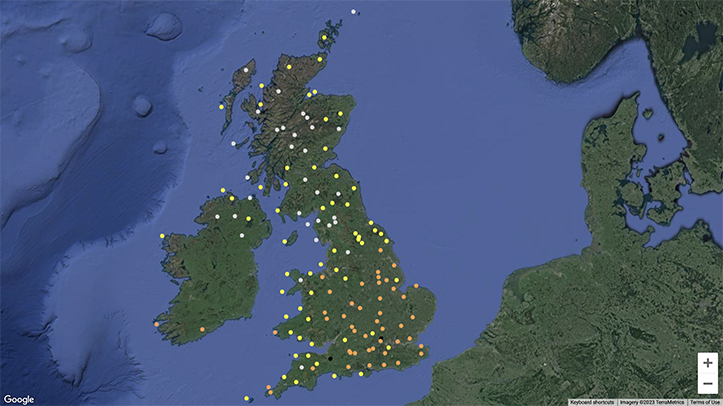Wide fluctuations in temperatures in recent weeks and predictions of a very cold spell this month mean sheep farmers will have to be even more aware of the risk factors when it comes to the threat of nematodirus in their lambs this spring.
The Nematodirus Forecast from the Sustainable Control of Parasites in Sheep (SCOPS) group is a free online service that will prove to be an invaluable resource for producers, vets and advisors.
Speaking on behalf of SCOPS, independent sheep consultant Lesley Stubbings said: “Nematodirus battus, the parasite that causes nematodirus is a tricky one for sheep farmers, as it has a different lifecycle to other worms.
“Eggs overwinter on ground grazed by sheep the previous year and hatch the following spring once the weather exceeds 10°C. Over the last few years, the SCOPS forecast has become a key source of information, with many farmers, vets and advisers checking it on a regular basis.”
Ms Stubbings said that while the news is full of predictions of the coldest March on record, some parts of southern England have been experiencing sunny spells ideal for nematodirus to hatch and early born lambs could already be at risk.
She added: “It is really important that sheep farmers know what is happening in their area. If we do get a very cold March followed by a sudden warm spell, lambs that are starting to eat significant amounts of grass (at about six weeks of age) are at high risk.
“This can happen very quickly, causing high numbers of mortalities and stunting the growth of lambs that do survive.”
The SCOPS Nematodirus Forecast is an interactive map, updated daily using data from 140 weather stations. Farmers, vets and advisors can select their nearest or most representative weather station and use the traffic light warning system to quickly check the level of risk. The forecast also provides advice on treatment options and possible management actions.
As well as using the forecast, the SCOPS group advises sheep farmers to monitor for signs of diarrhoea and ill thrift in lambs, and not to exclude nematodirus as a cause of disease even if your regional hatching risk is still low.
Ms Stubbings continued: “The forecast highlights the level of risk based on local weather conditions – but the exact date of hatching can be influenced by variations in microclimate. Sheep farmers and their advisors must also take into account the risk to each group of lambs based on the history of the field and its aspect and altitude.
“South facing fields tend to have an earlier hatch and every 100m increase in altitude between the farm and the weather station on the forecast map will delay hatching by about seven days. For example, if the nearest station is at 200m above sea level and the farm is at 100m above sea level, hatching could be around seven days earlier than our forecast.”
Kevin Harrison, a sheep farmer on the Gloucestershire/Somerset border and SCOPS steering group chairman, added: “The SCOPS Nematodirus Forecast is an incredibly valuable resource that we are very proud to provide. The map suggests the current risk is for farmers, like me, in the south of England, possibly up into the Midlands and South Wales.
“But the risk will increase for farmers further north as we progress into spring, which is why SCOPS endeavours to make the forecast available from mid-February until late-May every year.”


